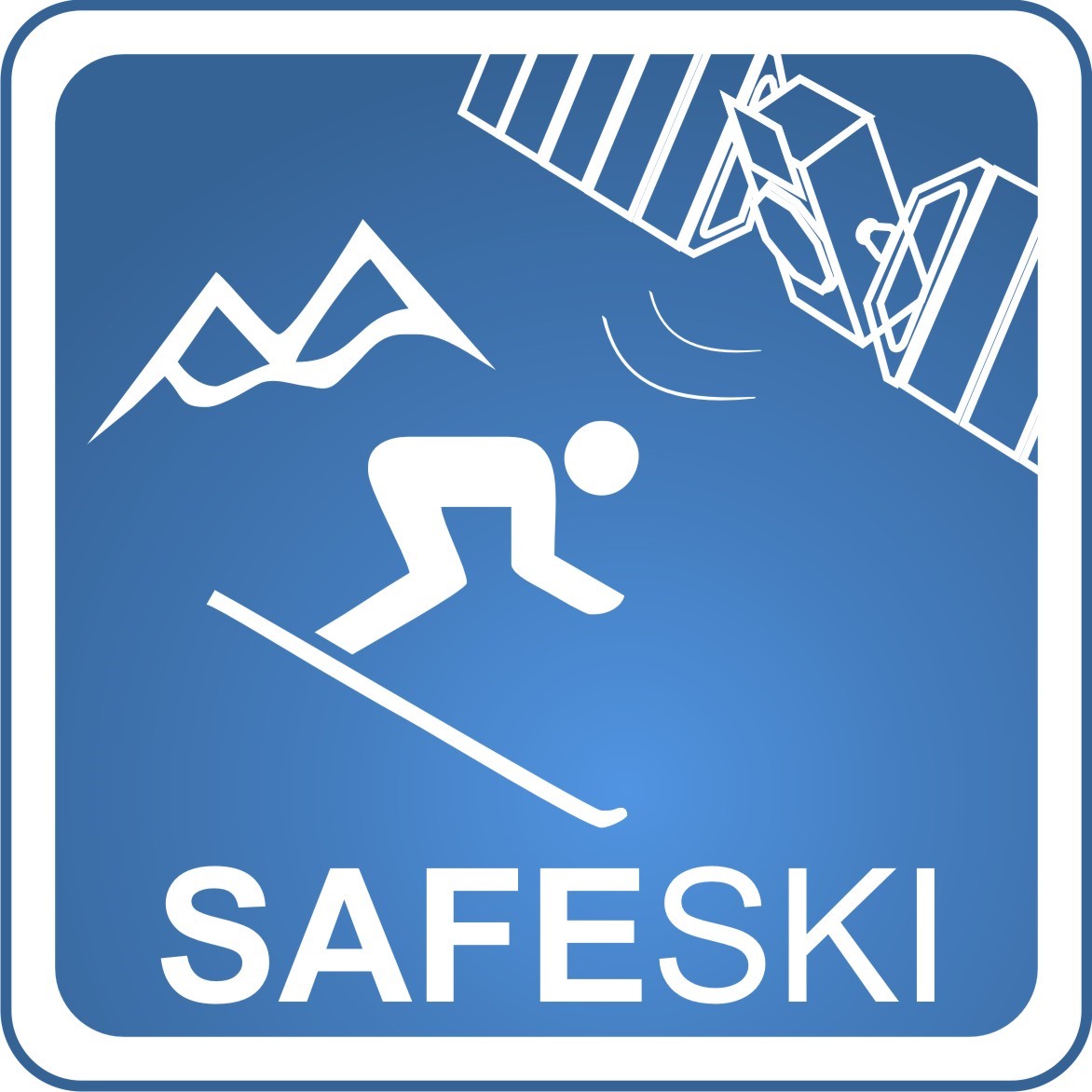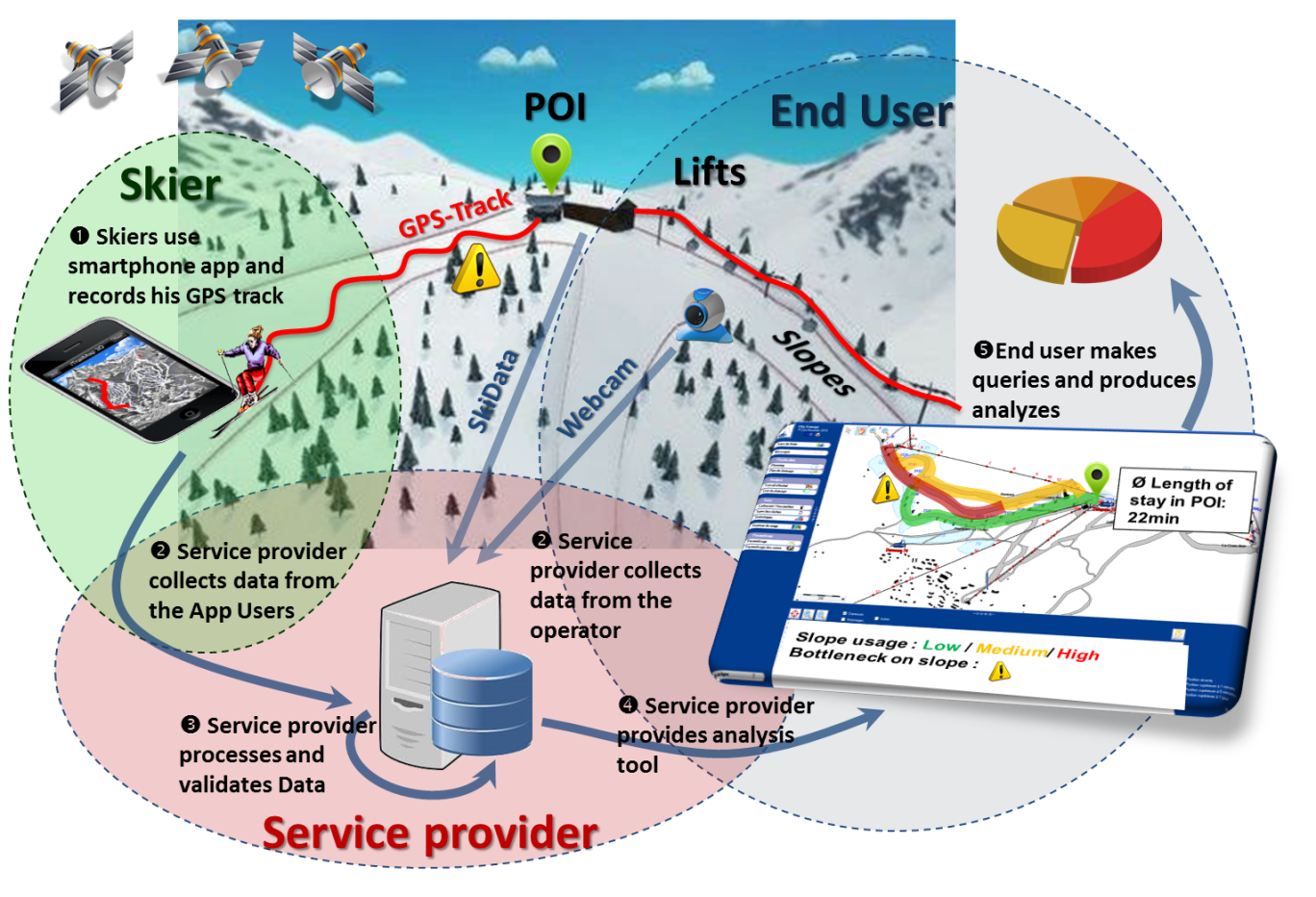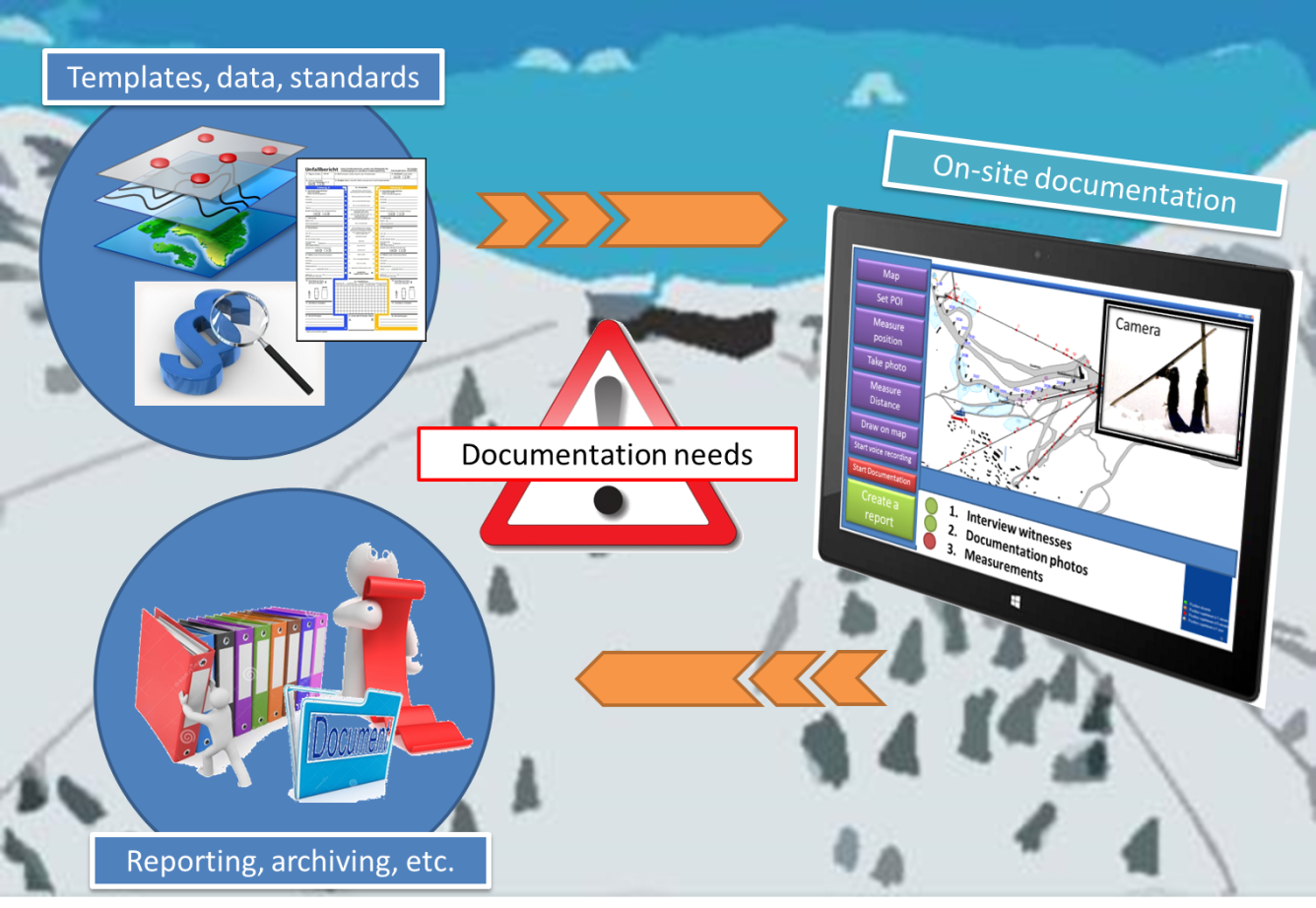
Objectives of the service
The Alps comprise some 300 skiing resorts with about 20.000 kilometres of slopes. Every year, almost 9 million practice alpine skiing in Austria. As a conservative prediction to all countries in the Alps, some 30 to 40 million people are practicing skiing each year and the skiing resorts are competing to attract as many of these potential customers as possible. Recent and also rapidly upcoming technology advances opened a gap between traditional ways of providing information to the skiers and potential services that could be provided regarding planning, documentation, optimization, enjoyment and safety. Therefore, SafeSki aims at:
- increasing safety and security on slopes through identification of critical areas,
- increasing customers through optimized processes and thus no waiting times,
- saving time regarding data acquisition through fast, easy and complete documentation of data in the field and
- reducing personnel costs through optimization of work and infrastructure.
The following SafeSki services are provided:
- The “Consumer Habits Identification Service (CHIS)” collects data about end users in ski resorts in support of understanding the virtual preferences of skiers.
- The “Documentation Support Service (DSS)” supports the ski resort staff in documentation of their large variety of tasks e.g. incident mitigation, accident first-aid provision, and blasting operations for avalanche control.
Users and their needs
Following stakeholders are addressed by the SafeSki system:
- Ski resort operators and developers
- Marketing organisations
- Slope rescue and avalanche blast masters
- Skiers and snowboarders
Four ski resorts confirmed to fully support the pilot implementation of SafeSki, to install the SafeSki system in their premises and to use and validate it as alpha users:
- Téléverbier (Switzerland)
- Crans-Montana (Switzerland)
- Ski amadé (Austria)
- Arlberger Bergbahnen (Austria)
The top level user needs listed below have been identified by dedicated interviews with the stakeholders, based on current scenarios and existing operational processes which should be improved in the future:
1. Need for a safety management to ensure
1.1. safety of the slopes,
1.2. safety of ski resort personnel and
1.3. support of search and rescue operations
2. Need for documentation support in case of
2.1. accidents of users and staff,
2.2. blasting operations and
2.3. maintenance work
3. Need to provide situation and location based information for skiers
4. Services to enhance utilization of existing infrastructure and systems
5. Need to influence consuming behaviour and need to obtain more information about users
6. Need to receive area-wide environmental data via interoperable software/hardware solutions
Service/ system concept
The Consumer Habits Identification Service (CHIS) enables the ski resort operators to answer the basic question “How do their visitors spend their time?”. For this purpose, CHIS uses anonymized collected data about ski resort visitors. Such information is gained from available local systems (e.g. ticketing systems) and from end user systems (e.g. ski resort or third party smartphone apps). CHIS provides tools to evaluate and analyse the collected data with respect to the information needs by the different ski resort members (e.g. marketing, local management). The results are displayed to the ski resort operators in a valuable format including figures, graphs, maps and statistical information.

The Documentation Support Service (DSS) provides services for an easier documentation of activities (e.g. incidents, accidents, and blasting operations) with seamless data processing, i.e. as much data as possible is captured and inserted automatically where required. Predefined templates allow the operator to acquire and document the necessary information/data on site easier and faster. The system automatically fills in the necessary reports and allows the operator to edit and keep track of the documentation. The loss of information between the on-site investigations and the reporting is minimized.

Space Added Value
Following list summarizes the space satellite technologies and the added valued they offer to the SafeSki service provision:
- GNSS
- Key enabling technology for geo-referenced data
- Accident documentation
- Documentation of blasting operations
- Documentation of maintenance tasks
- Key enabling technology for obtaining information about the behaviour of skiers
- Real-time information about utilization of infrastructure in order to provide e.g. queue time at lift stations, free seats in restaurants or traffic on slopes which can only be reached with trajectory data but not with ticketing data
- Skiers behaviour in relation to the real in-situ environmental conditions
- Behaviour/frequency of skiers according to announced environmental conditions
- Provision of capacity maps (including crowded areas, dangerous spots, etc.) through analysis of the speed and heading of the skiers
- EGNOS/EDAS
- Increase in accuracy, availability and integrity of the obtained GNSS data
- EO
- Obtaining area-wide rough information about the snow coverage within ski resorts
- Obtaining area-wide snow coverage time lines from the temporal variations of the radar signal backscattering between co-registered products (Sentinel-1) or from Sentinel-2 time series
Current Status
The pilot project has successfully ended in October 2018. Within the project, we were able to demonstrate the SafeSki system to the partner ski resorts in a limited environment and gathered important knowledge of what is needed to further enhance the system and target the market with a market-ready product. The next task is to install and run the SafeSki system in the production environments of our partner ski resorts. Since September 2018, the project partners entered a self-funded follow-up project to ensure the further development and the market implementation of SafeSki. It is planned to launch a generally overhauled DSS Android application by the end of January 2019.





